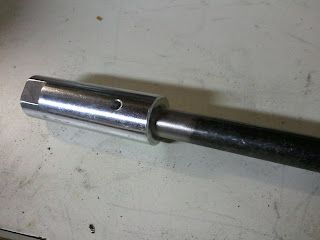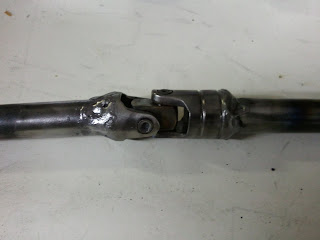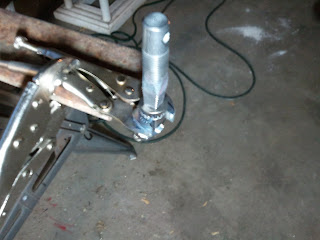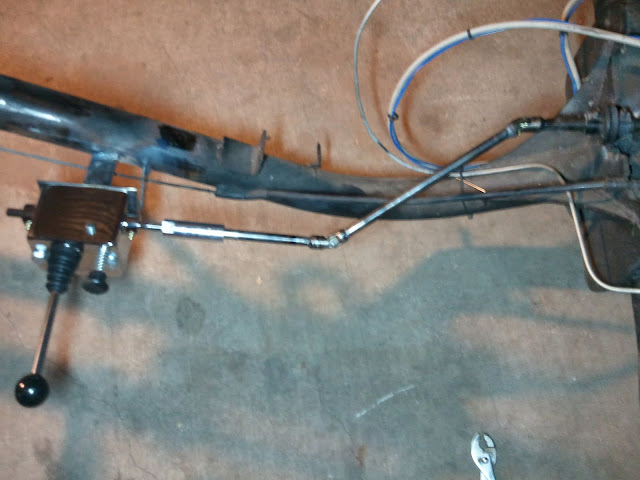I used 1/2″ weldable tubing to make a shift linkage.
The shifter came with a coupler that I used on that end. I had to take down the diameter of the tubing just a little for it to fit.
There is a roll pin supplied to stake the rod to the coupler. I may decide to use a more easily removable pin for the final assembly.
I used 3/8″ ratchet U-joints for the linkage. On the shifter end, I formed the tubing into a square end to fit inside the U-joint. I ground the face of the socket down to provide more surface area and to remove the chrome plating and welded it in place. On the male ends of the U-joint, I ground the tenon down to approximately cylindrical to fit inside the tubing and welded there.
The joints have a little more play than I had hoped. If they introduce too much play, I will try to tighten them up. If that doesn’t work, I may need to start over with better U-joints.
On the transaxle end, I used a shift rod adjuster but modified it. I hot forged the threaded end into a 3/8″ square to fit into the ratchet U-joint, shown here before welding.
The results look pretty good to me…
Still left to do is a support brace/bearing to stabilize the rod between the shifter and the first U-joint. I think I will use an appropriately sized bronze sleeve attached to a brace attached to the frame, although I have considered using Nylon. I will probably need this brace to be adjustable, so I will probably need to weld a tab to the frame for the brace to bolt to.


















